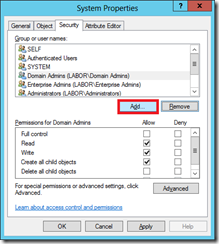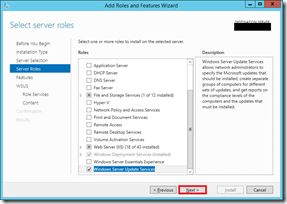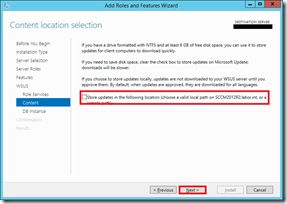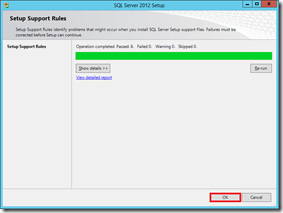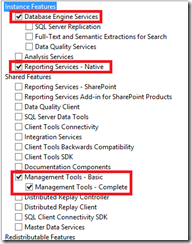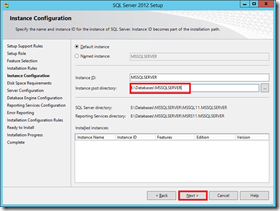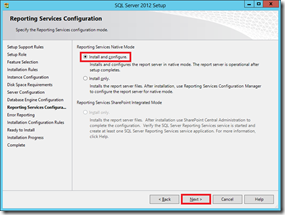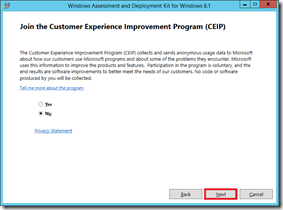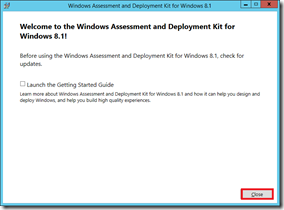I finished my experiment with unattended installation of SQL Server 2012. It was not that complicated I guessed but you cannot say it’s easy. So many setup switches…
What you have to do before starting the script I wrote (it’s at the end of this blog):
- Copy the content of the SQL installation sources to disk
- create an folder in this sources which is called “SQLUpdates” (you can name it different)
- Copy the Service Pack 1 and the Hotfix KB2793634 into the folder created
Following the script/command line I wrote, start from the root of the source files folder:
.\setup.exe /ACTION=Install /IACCEPTSQLSERVERLICENSETERMS
/UpdateEnabled=1 /UpdateSource=.\SQLUpdates
/features=”SQLEngine” “RS” “SSMS”
/installshareddir=”D:\SQL\(X64)”
/InstallsharedwowDir=”D:\SQL(X86)”
/instancedir=”D:\SQL(X64)”
/Instancename=MSSQLSERVER
/q
/AGTSVCACCOUNT=”NT Authority\System”
/INSTALLSQLDATADIR=”D:\SQL\(X64)”
/SQLBACKUPDIR=”E:\MSSQLSERVER\BACKUP”
/SQLCOLLATION=SQL_Latin1_General_CP1_CI_AS
/SQLSYSADMINACCOUNTS=”labor\domain admins” “labor\administrator”
/SQLSVCACCOUNT=”NT Authority\System”
/SQLTEMPDBDIR=”E:\MSSQLSERVER\TEMPDB”
/SQLTEMPDBLOGDIR=”E:\MSSQLSERVER\LOGS”
/SQLUSERDBDIR=”E:\MSSQLSERVER\USERDB”
/SQLUSERDBLOGDIR=”E:\MSSQLSERVER\Logs”
/RSSVCACCOUNT=”NT AUTHORITY\SYSTEM”
/INDICATEPROGRESS
/PID=”xxxxx-xxxxx-xxxxx-xxxxx-xxxxx”
Now I explain the different switches I used:
/ACTION=Install –> install SQL
/IACCEPTSQLSERVERLICENSETERMS –> to accept the license terms
/UpdateEnabled=1 –> Updates should be install as well
/UpdateSource –> should be the directory where the updates stored
/features –> features which should be installed (SQLEngine=Database Engine; RS= Reporting Services; SSMS=Management Studio and so on
/installshareddir –> path you want to install the SQL 64 bit features
/installsharedwowdir –> path you want to install the SQL 32 bit features
/InstanceDir –> path where the instance should be stored (not DB files)
/Instancename –> Name of the instance
/q –> no GUI and no user interaction
/AGTSVCACCOUNT –> Account which runs the SQL Agent
/InstallSQLDataDir –> path you want to store the default databases
/SQLBackupDir –> default directory for SQL Backups
/SQLCollation –> Collation settings of the instance (for ConfigMgr 2012 R2 SQL_Latin1_General_CP1_CI_AS)
/SQLSYSADMINACCOUNTS –> Accounts which should be sysadmin of the instance
/SQLSVCACCOUNT –> Account runs the SQL Service
/SQLTEMPDBDIR –> directory stores the database files of TempDB (Should be seperated)
/SQLTEMPDBLOGDIR –> directory stores the database log files of TempDB
/SQLUSERDBDIR –> directory stores the database files of UserDB
/SQLUSERDBLOGDIR –> directory stores the database log files of UserDB
/RSSVCACCOUNT –> Account runs the reporting services service
/INDICATEPROGRESS –> extended logging of the installation as console output
/Pid –> Product Code
More details you’ll get here.
Regards,
Matthias

























